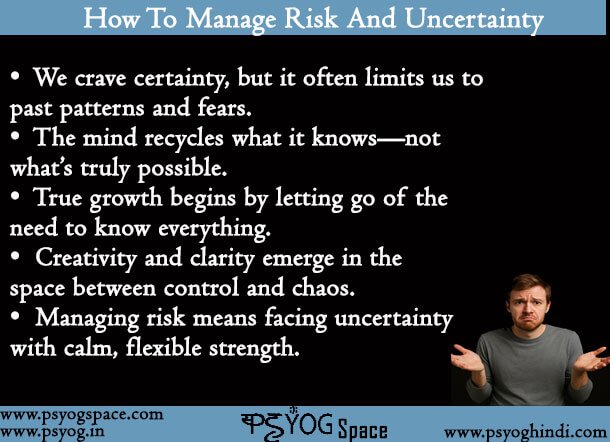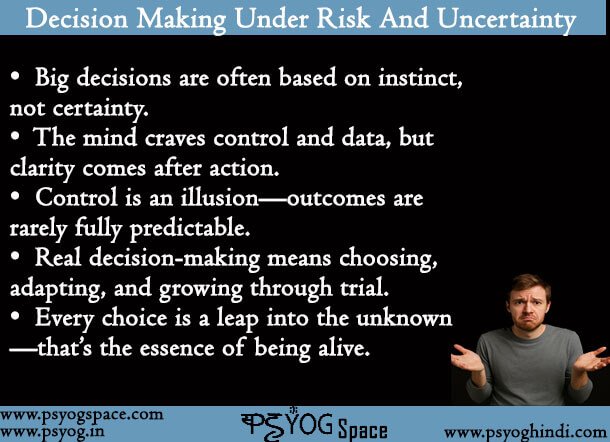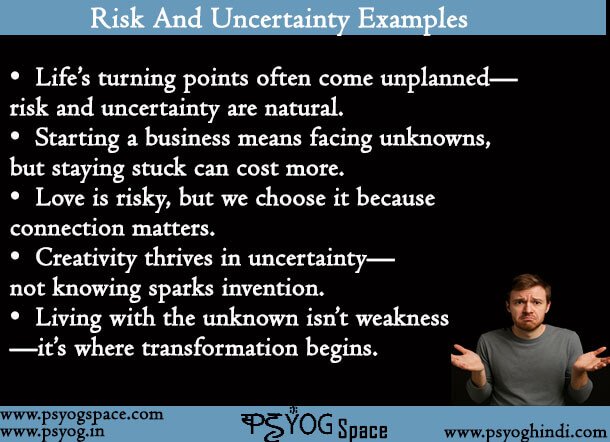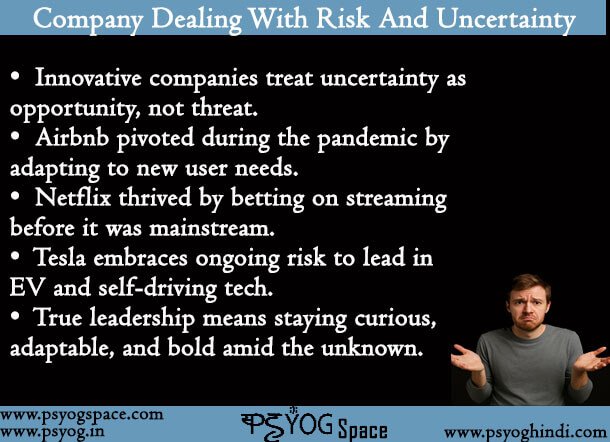Risk And Uncertainty: How To Manage, Decision Making, Examples And Company Dealing With It
We chase certainty like it’s some kind of safety net. But if we’re really honest, nothing in life has ever been guaranteed. Not your job, not your health, not even the people you love. And yet, we hold on. We try to plan, predict, and protect ourselves from what we don’t know. The truth is, risk and uncertainty are the actual ground we live on—even if we pretend otherwise. That’s why learning how to manage risk and uncertainty isn’t just smart, it’s survival. And not just survival—growth. Because the real magic? It only shows up when we step into what we don’t understand yet. In this piece, we’ll talk about what it means to make choices when the outcome isn’t clear (decision making under risk and uncertainty), we’ll look at real risk and uncertainty examples, and see what it takes for a company dealing with risk and uncertainty to not just cope—but create something better.
How To Manage Risk And Uncertainty
Let’s face it—we’re addicted to knowing. Knowing what’s next, knowing how it ends, knowing we won’t fall flat on our face. But this craving for clarity? It doesn’t always help us. It boxes us in. Because what is the mind, really? A storage unit of what’s already happened. The mind recycles memories, patterns, old fears. It offers what it knows, not what’s possible. That’s the limitation.
So the first step in learning how to manage risk and uncertainty is this: stop thinking your mind has the whole picture. It doesn’t. Certainty is just a pattern. It feels comfortable, sure—but it also keeps us rooted in the past. And nothing new grows there.
What if we let ourselves feel hollow? Not in a negative way, but spacious. When there’s nothing to hold onto, everything becomes possible. That’s when strange ideas show up. Solutions that logic alone couldn’t produce. The space between certainty and chaos is where life breathes.
Now, practically speaking, you still want tools. Contingency plans. Backup options. The ability to adapt. But the deeper skill is emotional—can you sit with not knowing and still move forward? That’s real strength. How to manage risk and uncertainty isn’t about eliminating the unknown. It’s about walking into it with open eyes and steady hands.

Decision Making Under Risk And Uncertainty
Big decisions rarely come with guarantees. Most of the time, we’re choosing based on gut, intuition, a glimpse of something that feels true—but isn’t proven yet. That’s the nature of decision making under risk and uncertainty. It’s a dance between logic and instinct.
Now, your brain will fight this. It wants data. Patterns. Something familiar to lean on. But here’s the thing—if we wait for everything to be certain, we wait forever. The path only clears after you take the first step. (Read: Never giving up and time)
And that’s scary. Because control feels good. It feels like we’re in charge. But honestly? We never were. Even our best decisions don’t always work out, and some of our worst choices lead to incredible places. So the idea that we’re calling every shot? That’s an illusion.
Real decision making under risk and uncertainty is about showing up fully present, choosing the next right thing—not the perfect thing—and being willing to adjust. Growth doesn’t come from standing still. It comes from trying, failing, recalibrating, and trying again.
The truth is, every decision we make is a little leap into the unknown. That’s not a problem. That’s what it means to be alive.

Risk And Uncertainty Examples
Think about any turning point in your life—good or bad. Was it planned? Or did it just… happen? That’s the thing about risk and uncertainty examples—they’re baked into real life.
Let’s say someone quits their job to start something on their own. There’s no map for that. There’s risk of failure. Uncertainty around money, time, success. And yet, people do it. Why? Because something inside them knows that staying where they are would cost more.
Or imagine falling in love. You’re opening yourself up to another person—with no control over how it ends. That’s risk. And still, we do it. Because connection is worth the unknown.
Or think of inventions. Creativity doesn’t emerge from certainty—it comes from a weird tension between not knowing and trusting something will appear. That’s how new ideas form. That’s how art, science, and tech evolve. Most risk and uncertainty examples that shaped the world started in a place of doubt, not clarity.
Living in the unknown isn’t a failure. It’s where breakthroughs begin.

Company Dealing With Risk And Uncertainty
Most companies talk about risk like it’s a problem to solve. But the ones that truly innovate? They treat uncertainty like a door to walk through.
Take Airbnb. When the pandemic wiped out travel, their business model fell apart. But instead of shutting down, they pivoted. They adapted to long-term stays and remote work trends. They listened to what people needed—and changed everything. That’s a company dealing with risk and uncertainty the right way. (Read: Are you living in faith or fear?)
Or look at Netflix. They began with DVDs. Remember that? If they hadn’t bet on streaming—at a time when it was untested—they’d be irrelevant today. They leaned into the unknown. And it paid off.
Tesla lives in this space constantly. Electric vehicles weren’t a sure thing. Neither was self-driving tech. But they moved anyway. There was risk. There still is. But that’s the cost of leadership.
The common thread? These companies didn’t run from the uncertain—they used it. A company dealing with risk and uncertainty must stay curious, agile, and a little fearless. Playing it safe won’t protect you anymore. In fact, it might destroy you.

Conclusion
So here we are, circling back to the beginning. Risk and uncertainty aren’t enemies. They’re the real landscape we live in. The trick isn’t to beat them—but to move with them. Let go of needing full clarity. Trust that not knowing is a sign you’re growing.
If you’re trying to figure out how to manage risk and uncertainty, start by making peace with it. You don’t have to like it. But you can learn to work with it. Make room inside yourself for silence, for not having all the answers. From that emptiness, ideas will come. New paths will form. (Read: Regain your free will)
In every choice, especially the important ones, you’ll find yourself facing decision making under risk and uncertainty. Don’t freeze. Move gently. Choose what feels honest—even if it’s not easy.
We’ve looked at plenty of risk and uncertainty examples, and the pattern is clear: great things grow in chaos. And for every company dealing with risk and uncertainty that dared to pivot, reinvent, or begin again—there’s proof that letting go of control is sometimes the smartest move of all.
There’s power in the unknown. Step into it.
FAQs
Risk means the future outcome is unknown but can be estimated. Uncertainty means you don’t even know what to expect. One is measurable, the other isn’t. Most of life includes both, and they’re not bad—they’re where transformation happens.
You don’t eliminate it—you learn to stand in it. Let go of needing certainty. Use strategies like planning, flexibility, and emotional grounding. The rest is trust. Space within invites insight. That’s the deeper side of managing risk.
Quitting your job. Falling in love. Starting something that might fail. These are all risk and uncertainty examples we live through every day. The biggest wins often come from walking directly into what we can’t control.

